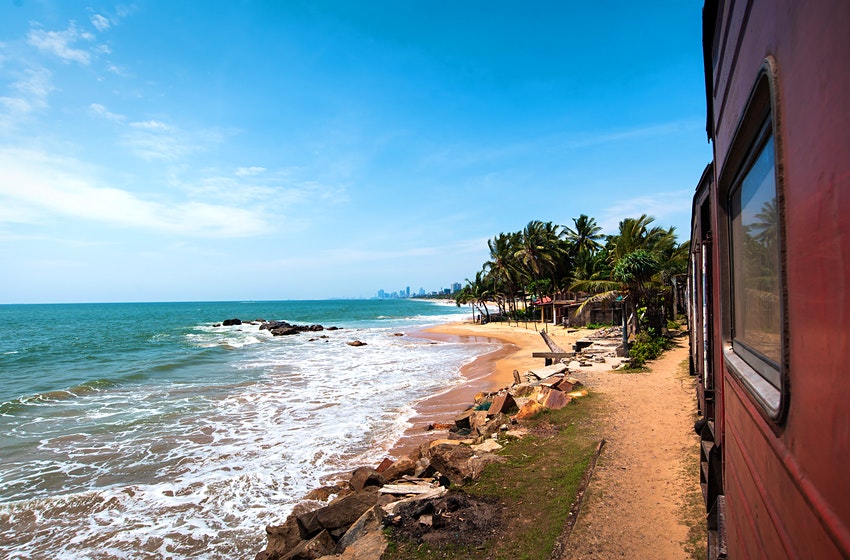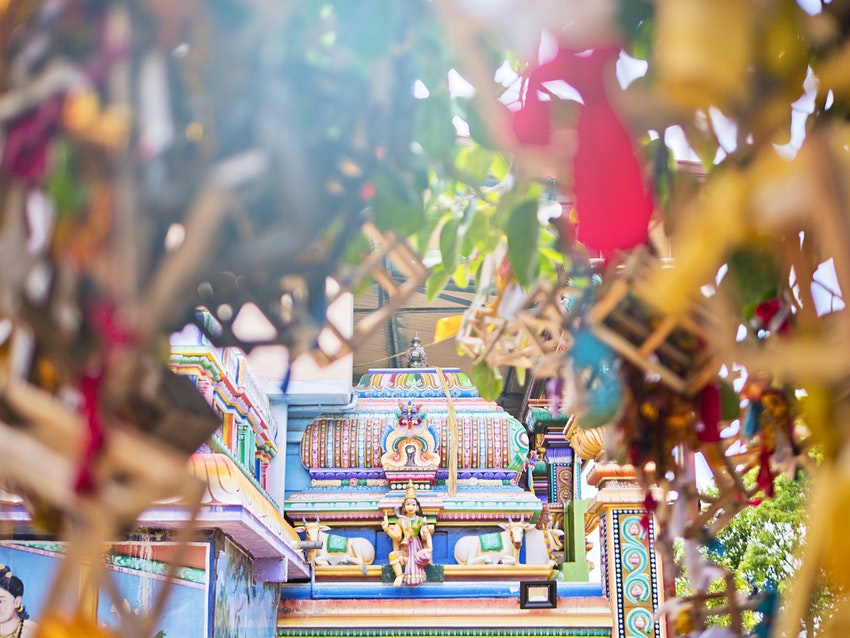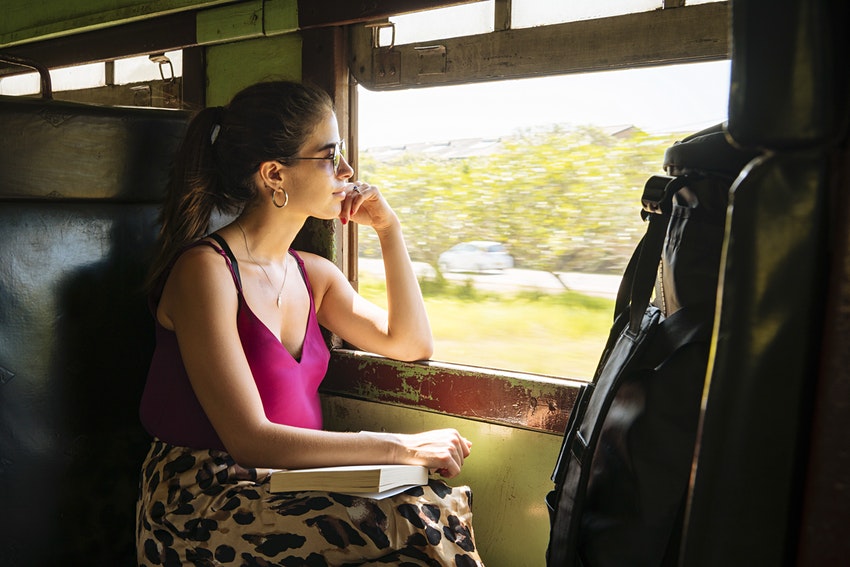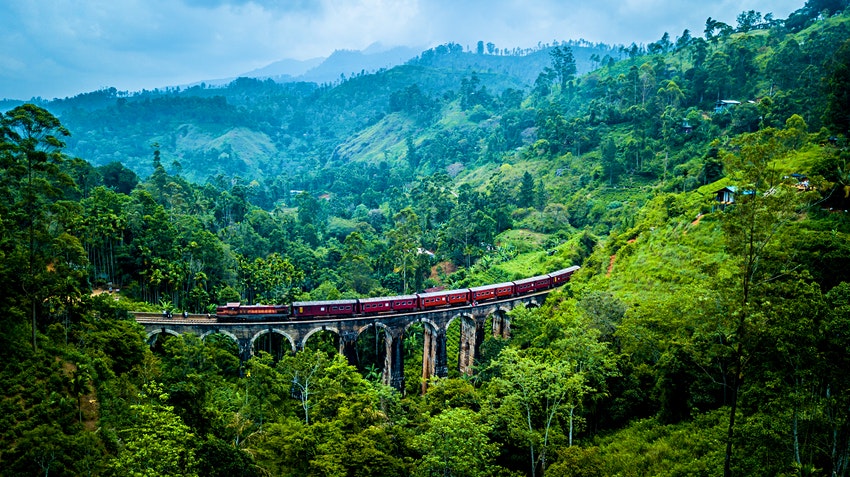There are just train trips, and there are train trips to Sri Lanka. The Island of Tears in the Lakkad Sea may be small, but it contains many of the most exciting rail journeys in the world. You can wander the suburbs with a colleague dozing on his shoulder, or perhaps weave in emerald green tea gardens and thickets of rainforest.
The locomotives that once carried tea and spices along these weaving railways have largely disappeared, but the colorful diesel locomotives that replaced them offer the same fascinating transect through the Sri Lankan landscape. If you are a fan of locomotive travel, be sure to book tickets (in advance!) For one of these four epic train journeys through Sri Lanka.

Colombo to Candy
One train journey on almost every Sri Lankan route, a three-hour journey from Colombo to Kandy will take you from the growing city to the picturesque green spiritual capital of Sri Lanka, home to the legendary Temple of the Sacred Tooth. The relic is said to be the true tooth of the Buddha.
Along the way, you will rush past hills, rice fields, lush rainforests, palm trees waving like giant hands, and miniature rural railroad stations with tin roofs and station attendants standing in plain sight. You will also feel the coolness of the air, leaving the coastal plain for a more pleasant climate of the hills.
The Colombo line to Kandy was the first major route established by the newly formed Ceylon Government Railway in the 1860s, cutting through wooded hills deep into the capital to bring tea and coffee to the coast, contributing to the economic ambitions of the British Empire.
Today, travelers travel in the opposite direction, a journey that is the perfect introduction to train travel in Sri Lanka, and offers arguably the most atmospheric and enjoyable way to get to Mount Hill from Colombo.

Candy to Badulla
The trip from Colombo to Kandy is just a warm-up for the most spectacular train trip in Sri Lanka: the main line of the British era, built as a channel for Sri Lanka’s most famous export – tea.
The journey from Kandy to Badulla takes seven to eight hours and passes through the tea country of Sri Lanka, passing circling, curling plantations that look deep in the hilly green landscape, like huge fingerprints of a giant. Neat fringes of lemongrass and canna bushes provide decorative decoration on the edges, while tea collectors in rainbow saris create bright colored flashes among the emerald sea. To take advantage of the best views, place the winning point in one of the open doorways of the train, feet dangling over the track.
The final stage from Ella to Badulla is perhaps the most dramatic section of the journey, with some impressive 19th-century feats transporting the train through valleys and ravines and around troubled exits.
To the north of Ella, the tracks meander over the nine-arch brick-and-stone bridge before reaching the Demodari loop, where the line goes around the top of the hill and runs back below. Many travelers end their journey on the Ellie and climb to the viewpoints around the bridge to get one of the most popular photography opportunities in Sri Lanka.

Colombo to Halle
The Indian Ocean washes almost to the railroad tracks as it travels south from Colombo to the Portuguese-founded city of Halle, bringing fresh breezes and the smell of sea salt directly into the carriages. As long as you sit to the right of the train, you will have a view of the ocean when the train knocks from Colombo.
The railway line meets the shore south of Halle Face Green, a large city park on the outskirts of the capital, and follows it almost the entire length of the journey. If the big blue lures are too much, passengers can get off the train in coastal cities, including Moragalla (via Hettimulla station), with the possibility of scuba diving among coral reefs or Hikkaduwa, where surfers ride on swells and sip lanes in coastal cafes.
Whether you want to sit down temporarily or not, be sure to select products from vendors who join the cars at tiny rural stations. Take some sweet corn, sliced fruit or packed curry and rice, and enjoy the bucolic scenes of coastal life – from children and dogs splashing in the surf, to the knights sitting on top of their wooden perch – all the way to Halle.

Anuradhapura to Jafni
The railway line to the far north of Sri Lanka was severed by fighting between southern Buddhists and Hindu Tamils during the long civil war in Sri Lanka. When the last Yal Devi Express entered Jaffna on June 13, 1990, it was bombed. Empty cars were converted into military bunkers, tracks for scrap metal were torn down, and stations were destroyed. For 25 years, rail travel to the Hindu north of Sri Lanka was a distant memory.
And then, in 2014, the shrill whistling of locomotives returned to the north, when the Yal Devi Express sounded for the first time in a generation in Jaffna, on brilliant new tracks. Today, a three-and-a-half-hour drive from the ancient Buddhist city of Anuradhapura to Jaffna opens a window to another Sri Lanka. You will leave the shining white dagobs (stupas) behind in Anuradhapura, and in their place the colorful feathers (temples) will begin to paint the countryside as you soar to the Hindu north of Sri Lanka. You will also leave behind the main tourist crowds of Sri Lanka, and international visitors do not have enough time, skipping the splendor of the northern coast of the island.
On the last approach to Jaffna, the landscape is leveled, and patches of water and salt marshes appear as the train crosses the Elephant Pass, a heavily militarized bottleneck guarding the entrance to the Jaffna Peninsula. Tall palm trees rise above the landscape, which still has the scars of war, but also green shoots of rejuvenation as villages and towns rise after decades of conflict. At the end, Jafna itself awaits, a bustling Hindu city with a colonial heart – an easy leap for some of Sri Lanka’s most idyllic, pristine islands and beaches.

How to travel by train in Sri Lanka
Trains run to most parts of the island, charging a little more than buses, but offering more atmosphere and better views. The Sri Lanka Railways website has details of each route, but to book online you will need to go through an agency – 12Go and Visit Lanka Tours which have a good reputation.
The third class is free for everyone, where you have to fight for space in a carriage jammed like sardine tin. The transition to the second class gives you open windows, plus comfortable enough soft seats and fans to cool off, while the first class brings more comfort and air conditioning. At the top of the line are first-class carriages with giant windows for sightseeing, but thick glass can make you feel a little isolated from the country you’re passing through.
Book first and second class beds and berths at the station a few days before the trip, or a week before the time for sightseeing salons. For the third grade, just tell me, buy a ticket and take a risk. In most trains, the best seat is a place on the floor in one of the open doorways between the cars, with a warm breeze blowing through your hair.

